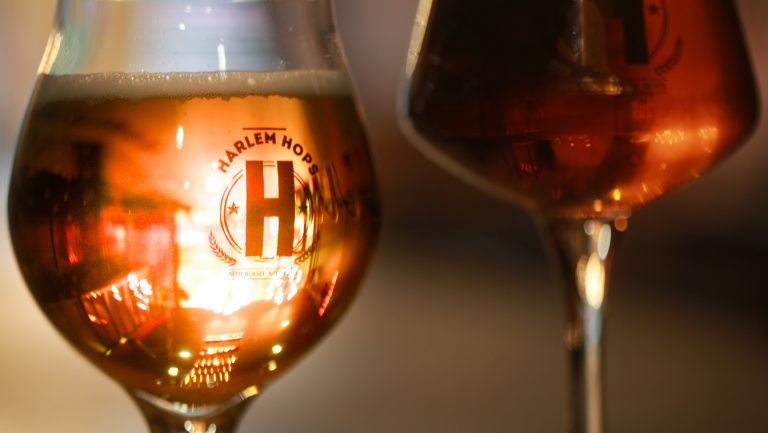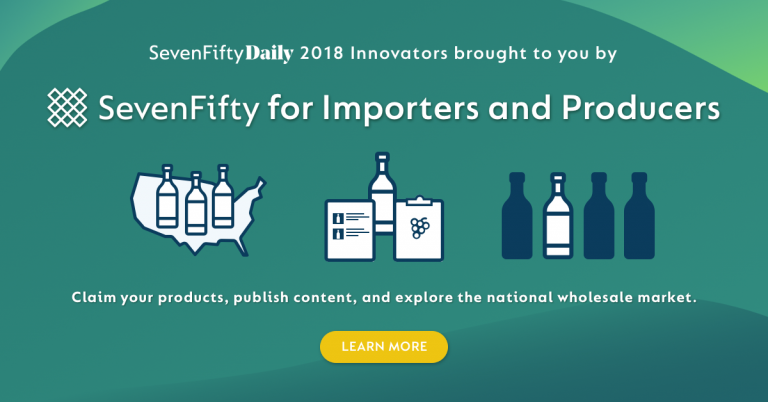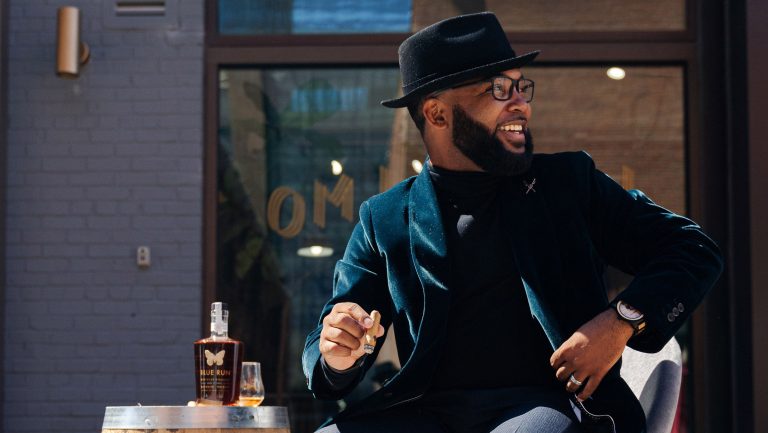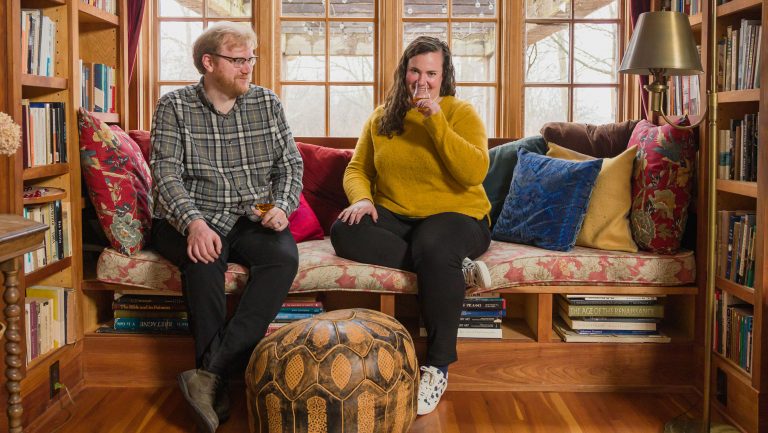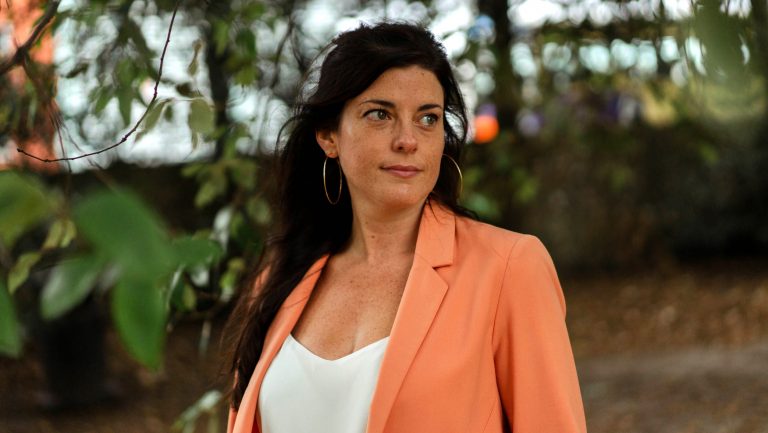Beer fanatic Kevin Bradford knew the best bars, bottle shops, and breweries in which to buy New York City’s best brews. For foggy and fragrant IPAs, the middle school math teacher scootered to Brooklyn’s Other Half beneath an overhead highway. For farmhouse ales, he’d be off to the oil-slicked Newtown Creek to hit up Transmitter Brewing in Queens.
But when it came to Harlem, his home since 2002, fresh, local beer was harder to find than street parking. Says Bradford, “The area had no craft beer scene.”
Around 2011 or so, Bradford started toying around with the idea of opening a bar for better beers in his own garden apartment. He even went so far as to petition the local zoning board for a variance that would let him do so—alas, it was denied.

Don’t miss the latest drinks industry news and insights. Sign up for our award-winning newsletters and get insider intel, resources, and trends delivered to your inbox every week.
At the same time, unbeknownst to Bradford, Harlem native Kim Harris had her own beer awakening, having fallen under the spell of Belgian beers at Bierkraft in Brooklyn, but she couldn’t buy the beers in her neighborhood. She wondered why.
As a restaurant consultant, Harris realized she’d have to fix the problem herself. She pecked out a business plan and, a year or so later, followed a lead on a promising Harlem storefront.
As she sought like-minded investors, Harris was introduced by a mutual friend to Bradford, and along with investor Stacey Lee, they opened Harlem Hops this past June. It’s the historic black neighborhood’s first craft beer bar run by African Americans, offering 16 lines of local and regional IPAs, pilsners, and sours from the likes of Brooklyn-based Interboro, Finback in Queens, and black-owned breweries such as Harlem Brewing. The beverages are served to customers as diverse as the beer itself, putting to rest a misconception.
“So many brewers think that people of color aren’t really into craft beer, but that’s not true,” Bradford says. “They just don’t have the knowledge.”
Harlem Hops provides access to unique ales and lagers along with bar-stool beer education, a formula that’s led to fast success. “I went to see Harlem Hops in action on a Monday, right around happy hour, and the bar was packed,” says Bruno Daddi, the brewer and owner of ICONYC in Queens. “Most other bars are empty at that time on Monday.”
Harlem Hops has poured ICONYC’s lagers and IPAs regularly ever since opening, providing the brewery a stage where none had existed. “I appreciate business owners opening in destinations that are not known for craft beer,” Daddi says. “We need more bars like Harlem Hops in in-need neighborhoods, where craft beer isn’t available.”
That’s the future plan. New York City brims with neighborhoods and boroughs that stand as a kind of cultural shorthand. Bushwick and Williamsburg, in Brooklyn, embody cutting-edge coolness, while Manhattan’s Upper East Side symbolizes moneyed elitism. Harlem—that’s the heart of the American black experience, associated with soul food, jazz, and rap, and home of the intellectual and artistic conflagration of the Harlem Renaissance.
“When we developed the concept of Harlem Hops, we knew that Harlem was something known all around the world,” Harris says. “Because of the name, it can travel anywhere.”
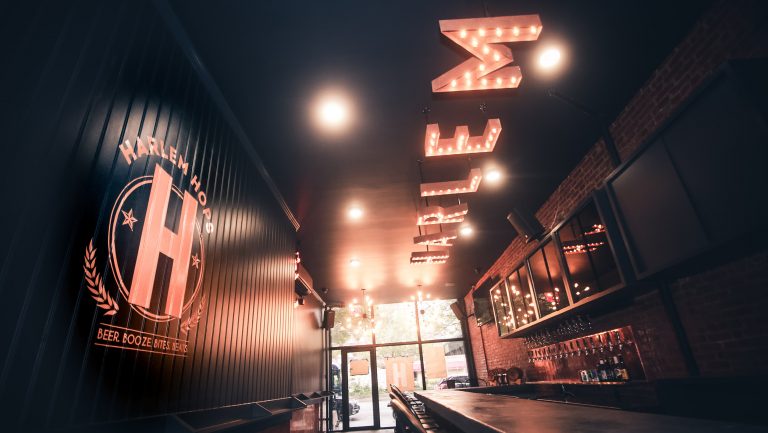
An Expanding Mind-set
In terms of production, consumption, and marketing, white men have long dominated modern beer’s narrative. Inexpensive and inebriating malt liquor was heavily advertised to black America, the lowbrow beer’s party-starting potential touted in Billy Dee Williams’s Colt 45 commercials of the ’80s, as well as a number of hip-hop videos.
“Rather than the story of beer and people of color being crafted by the community, it has traditionally been created by advertisers and agencies that do not have the best interests of black and brown people in mind,” Teo Hunter, a cofounder of event and education platform Dope & Dank, wrote. “Sadly, many of us justify our dollars being exported out of the community just because of a catchy commercial or a famous spokesperson.”
Hunter and Beny Ashburn created Dope & Dank to loosen malt liquor’s vise grip through a mission of education and inclusion, running craft beer events in offbeat venues like barbershops. “We realized that a lot of people of color don’t really know the difference between big beer and craft beer,” Ashburn said. “And we realized that really the only way to introduce that difference was to create a space—be it an event platform or content—that really helps people understand the difference.”
Celebrating the wine, beer, and spirits professionals who are moving the drinks industry forward
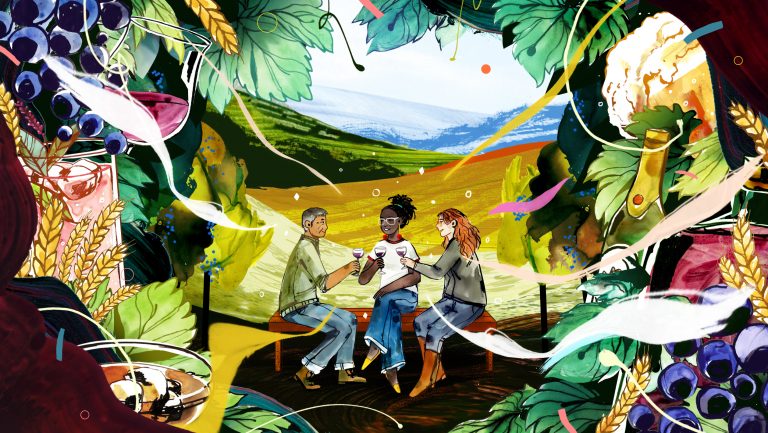
SevenFifty Daily’s 2018 Drinks Innovators
“I think you have to think about the nature of craft beer and the culture,” added Hunter. “It’s not something you see a commercial on or hear a radio spot on. It’s something that was shared with you.”
At the same time that education is being stressed, black brewers are increasingly making their mark on the industry. Kevin Blodger, who first brewed in college, cofounded Baltimore’s Union Craft Brewing in 2011 and won multiple medals at the prestigious Great American Beer Festival for his beers, including Balt Altbier (2012) and the Old Pro Gose (2014). Drew Fox turned his homebrew hobby into the 18th Street Brewery in Gary, Indiana, where he makes acclaimed milk stouts seasoned with coffee, cherries, and more. (18th Street has a second location in Hammond, Indiana.) In Toledo, Ohio, homebrewer Chris Harris turned his garage into Black Frog Brewery, where he makes beers such as the Ebony Prince Stout.
This past August, Pittsburgh’s Fresh Fest became the country’s first festival to champion beer makers of color. It featured more than a dozen black-owned breweries, including Harrisburg’s forthcoming Harris Family Brewery, and drew more than 1,000 attendees.
Such endeavors help open doorways into the world of craft brewing, and it really matters who’s holding the door open. “Visibility has more of a role than most people will acknowledge,” says J. Nikol Jackson-Beckham, the Brewers Association’s diversity ambassador. The more African Americans who are seen at breweries and beer events, the more comfortable they will be. Says Jackson-Beckham, “It’s important to be authorized by what you see.”
Teach Them Well
When you enter Harlem Hops, an oasis floating in that quintessential Upper Manhattan stew of bodegas, hair salons, brownstones, and Caribbean restaurants, you’ll spot dreadlocks and tattoos, colorful head wraps and snapback caps worn backward—and customers spanning the spectrums of color and age. At the center is Bradford, holding court as beer curator and educator.
“One of things about teaching is being able to get everyone on board with what you want to do, and make them want to do it as well,” Bradford says. He’s found that relating the stories behind the beers he has on tap is key for connecting with customers—“If I someone wants to drink a Blue Moon, I say, ‘We don’t have Blue Moon, but we do have Renaissance Wit from Harlem Brewing, which is a black-owned brewery.’”
Other times he’ll offer, say, the approachable Dos Ojos—a Mexican-style lager—from Interboro, whose head brewer, Jesse Ferguson, once ran a hip-hop record label. Another easy sell is the aromatic Coded Tiles pale ale from LIC Beer Project, located near the legendary Queensbridge Houses—the birthplace of Nas, Mobb Deep, and other hip-hop royalty. “I tell people,” says Bradford, “‘Would you believe the brewery is two blocks away from Queensbridge?’”
Sit at the bar and you’ll spot a pillar inscribed with more stories, including ones about how Africa has the world’s earliest recorded evidence of beer making and how enslaved Africans brought brewing techniques to America, even making highly regarded beer for Thomas Jefferson at Monticello. Black people brewing and enjoying great fermented beverages isn’t a deviation—it’s a historical norm.
Underscoring that, Harlem Hops also offers black-owned wine such as Chaos Theory, from California’s Brown Estate, as well as small-batch spirits like Tennessee’s Uncle Nearest whiskey. Its namesake is the black distiller Nathan “Nearest” Green, who mentored a man by the name of Jack Daniel.
Harlem Hops could be at home in Detroit, Washington, D.C., Tokyo—basically anywhere that people drink beer, which is to say everywhere. Craft beer is a global revolution of flavor, its focus on what’s inside a glass, not the color of the hand holding it. But to navigate the vast cosmos of IPAs and sours, witbiers and wild ales, sometimes people need a little hand-holding, preferably by a friendly, familiar guide.
Read our Q&A with Kevin Bradford.

Dispatch
Sign up for our award-winning newsletter
Don’t miss the latest drinks industry news and insights—delivered to your inbox every week.
Contributing editor Joshua M. Bernstein is a beer, spirits, food, and travel journalist, as well as an occasional tour guide, event producer, and industry consultant. He writes for the New York Times, Men’s Journal, New York magazine, Wine Enthusiast, and Imbibe, where he’s a contributing editor in charge of beer coverage. Bernstein is also the author of five books: Brewed Awakening, The Complete Beer Course, Complete IPA, Homebrew World, and Drink Better Beer.


